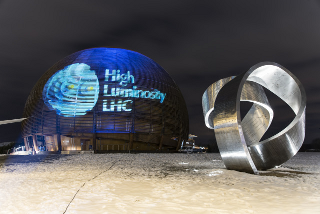Particle physics is a long-term field of research: the LHC was originally conceived in the 1980s, but did not start running until 25 years later. An accelerator unlike any other, it is now just at the start of a programme that is set to run for another 20 years.
While the LHC programme is already well defined for the next two decades, it is now time to look even further ahead, and so CERN is initiating an exploratory study for a future long-term project centred on a next-generation circular collider with a circumference of 80 to 100 kilometres. A worthy successor to the LHC, whose collision energies will reach 13 TeV in 2015, such an accelerator would allow particle physicists to push the boundaries of knowledge even further. The Future Circular Collider (FCC) programme will focus on studies for a hadron collider, like the LHC, capable of reaching unprecedented energies in the region of 100 TeV. It will also study electron-positron and electron-proton options.
Opening with an introduction to the LHC and its physics programme, this lecture will then focus on the feasibility of designing, building and operating a machine approaching 100 km in length and the biggest challenges that this would pose, as well as the different options for such a machine (proton-proton, electron-positron or electron-proton collisions).
